The SandForce Roundup: Corsair, Kingston, Patriot, OCZ, OWC & MemoRight SSDs Compared
by Anand Lal Shimpi on August 11, 2011 12:01 AM ESTDiffering Firmwares
OCZ's exclusive on the SF-2281 has finally lifted and now we're beginning to see an influx of second generation SandForce drives from other vendors. Make no mistake, although these drives may look different, have creative new names and different PCBs - they should all perform the same if you know what you're comparing.
OCZ sells three lines of SF-2281 based drives: Vertex, Agility and Solid. The Vertex 3 uses synchronous NAND (read: faster), while the Agility 3 and Solid 3 use slower asynchronous NAND.
Other companies are following suit. Asynchronous NAND is more readily available and cheaper, so don't be surprised to find it on drives. So far everyone seems to be following OCZ's footsteps and creating separate lines for the synchronous vs. asynchronous stuff.
The table below should break it down for you:
| SandForce SF-2281 SSD Comparison | ||||||
| Product | NAND Type | Capacities Available | Latest FW Available | Price for 120GB Drive | ||
| Corsair Force GT | Sync IMFT | 60GB, 120GB, 240GB | Corsair v1.3 (SF v3.20?) | $248.49 | ||
| Kingston HyperX | Sync IMFT | 120GB, 240GB | SF v3.20 | $269.99 | ||
| MemoRight FTM Plus | Sync IMFT | 60GB, 120GB, 240GB, 480GB | MR v1.3.1 | N/A | ||
| OCZ Agility 3 | Async IMFT | 60GB, 120GB, 240GB | OCZ v2.11 (SF v3.20) |
$209.99 | ||
| OCZ Vertex 3 | Sync IMFT | 60GB, 120GB, 240GB, 480GB | OCZ v2.11 (SF v3.20) |
$254.99 | ||
| OCZ Vertex 3 MAX IOPS | Toggle | 120GB, 240GB | OCZ v2.11 (SF v3.20) |
$284.99 | ||
| OWC ME Pro 6G | Toggle | 120GB, 240GB, 480GB | SF v3.19 | $279.99 | ||
| OWC ME Pro 6G | Sync IMFT | 120GB, 240GB, 480GB | SF v3.19 | $279.99 | ||
| Patriot Pyro | Async IMFT | 60GB, 120GB, 240GB | SF v3.19 | $209.99 | ||
| Patriot Wildfire | Toggle | 120GB, 240GB, 480GB | SF v3.19 | $284.99 | ||
The four drives we're looking at today are a mixture of synchronous and asynchronous. The newly announced Patriot Pyro uses async NAND while everything else uses some form of synchronous Flash memory. OWC recently switched to using 32nm Toggle NAND in an effort to boost performance to OCZ MAX IOPS levels.
SandForce delivers firmware to all of its partners, however the schedules don't always match up. OCZ gets first dibs and renames its firmware to avoid direct comparisons to other drives. There are cases where OCZ may have some unique features in its firmwares but I don't believe that's the case with its latest revision.
Corsair and MemoRight do the same renaming, while the rest of the players stick to the default SandForce firmware version numbers. Everyone that shipped us drives seems to be sticking to either the latest firmware revision (3.20) or the one prior to it (3.19). Performance hasn't changed too much between all of these revisions, the majority of the modifications are there to squash this BSOD issue.
Corsair Force GT
The Force GT is Corsair's answer to OCZ's Vertex 3. The GT ships with a custom PCB design and is outfitted with IMFT (Micron branded) NAND running in synchronous mode. The 120GB sample we were sent for review has 16 NAND packages each with one 8GB MLC NAND die. Corsair just released its first firmware update for the Force GT, bringing it up to version 1.3 in Corsair-speak. Given the timing of the release, I'm going to assume this is Corsair's rebrand of the SandForce 3.20 firmware.
The Force GT is the cheapest 120GB SF-2281 based drive with synchronous NAND in the roundup. The drive comes with a 3 year warranty from Corsair.
Kingston HyperX
As Kingston's first SandForce SSD, the HyperX looks great. Although it doesn't really matter once you get it in the system, the HyperX enclosure has the most heft to it out of all of the SF-2281 drives we've reviewed. Part of the added weight comes from the two thermal pads that line the top and bottom of the case:
Kingston annoyingly uses 1.5mm hollow hex screws to keep the drive together, our biggest complaint from a physical standpoint. As a standalone drive the HyperX is our second most expensive here at $269.99 for 120GB.
The drive ships with a custom PCB and the latest SandForce firmware (3.20). Kingston sent along the upgrade kit which includes a 3.5" drive sled, USB enclosure, SATA cable and Kingston screwdriver:
MemoRight FTM Plus
We haven't had a MemoRight drive in for review since the early days of SSDs on AnandTech. The FTM Plus is a vanilla SF-2281 drive with SandForce's 3.19 firmware. The PCB design is custom although the NAND configuration is pretty standard. We got a 240GB drive in for review with 16 NAND devices and two 8GB 25nm IMFT die per chip.
OWC Mercury Extreme Pro 6G
The last time we reviewed OWC's Mercury Extreme Pro 6G we were a bit surprised by the presence of a rework on a shipping SSD. Since then a couple of things have changed. For starters, the rework is gone as you can see from the images above. While these drives use standard 25nm IMFT synchronous NAND, OWC has recently switched over to 32nm Toggle NAND - giving the Mercury Extreme Pro 6G the same performance as the MAX IOPS drives from OCZ or the Patriot Wildfire. We don't have the Toggle NAND drives in yet but I'd expect performance similar to the MAX IOPS for the updated drives. The branding and pricing haven't changed, just the performance.
The Mercury Extreme Pro 6G is offered with a 5 year warranty from OWC. It's also the most expensive SF-2281 based on IMFT NAND with a 120GB drive costing $279.99.
Patriot Pyro
While the Wildfire is Patriot's high-end SF-2281 offering, the Pyro is its more cost effective solution. The Pyro's savings come courtesy of its asynchronous NAND, putting it on par with an Agility 3. The Wildfire by comparison is akin to OCZ's MAX IOPS drives. Patriot uses the same PCB layout as OWC. The drive ships with firmware revision 3.19 and a 3-year warranty.
The Test
| CPU | Intel Core i7 2600K running at 3.4GHz (Turbo & EIST Disabled) - for AT SB 2011, AS SSD & ATTO |
| Motherboard: | Intel H67 Motherboard |
| Chipset: | Intel H67 |
| Chipset Drivers: | Intel 9.1.1.1015 + Intel RST 10.2 |
| Memory: | Corsair Vengeance DDR3-1333 2 x 2GB (7-7-7-20) |
| Video Card: | eVGA GeForce GTX 285 |
| Video Drivers: | NVIDIA ForceWare 190.38 64-bit |
| Desktop Resolution: | 1920 x 1200 |
| OS: | Windows 7 x64 |


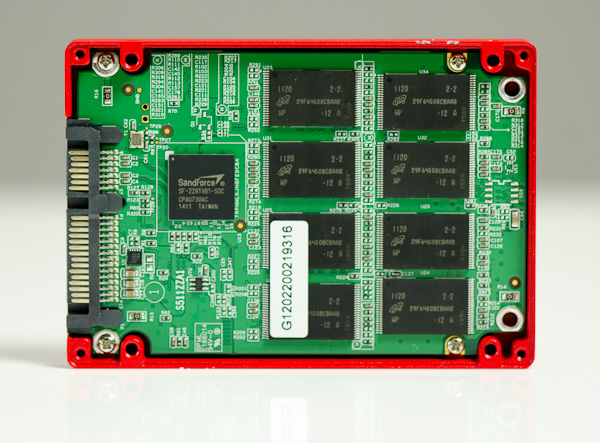



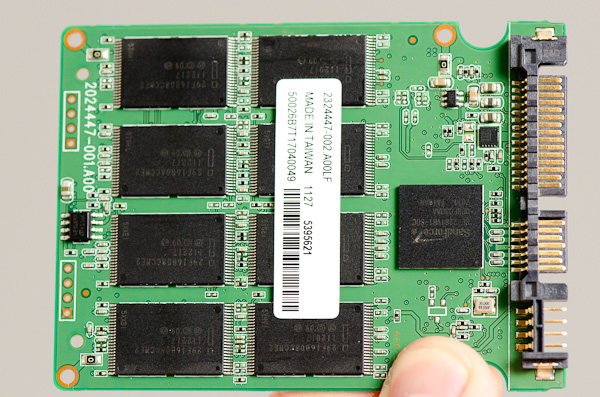
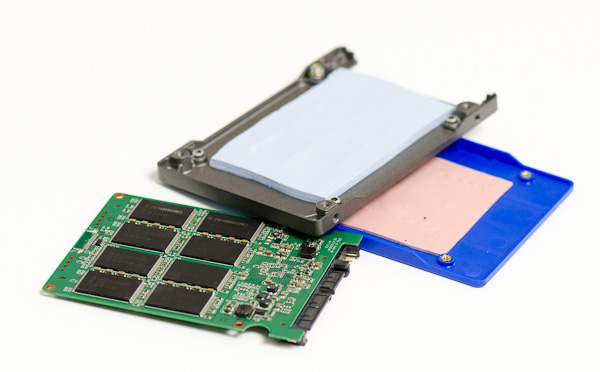
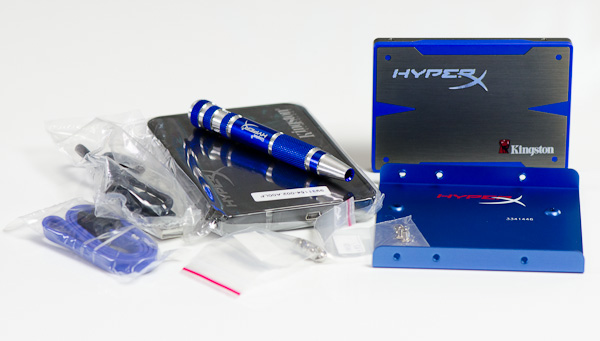






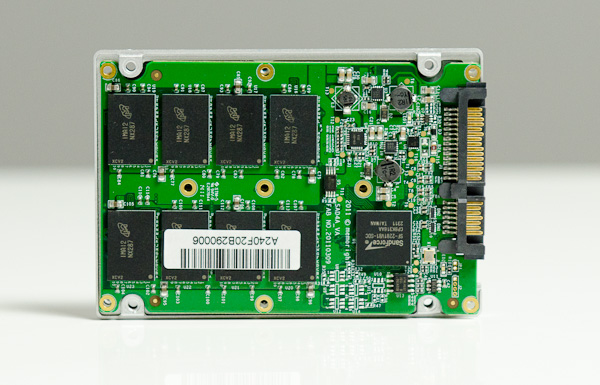




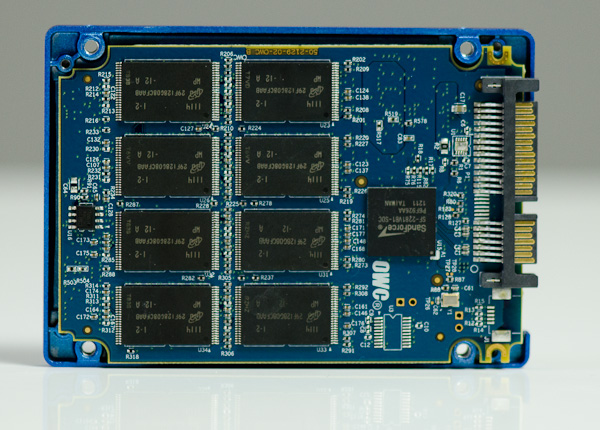
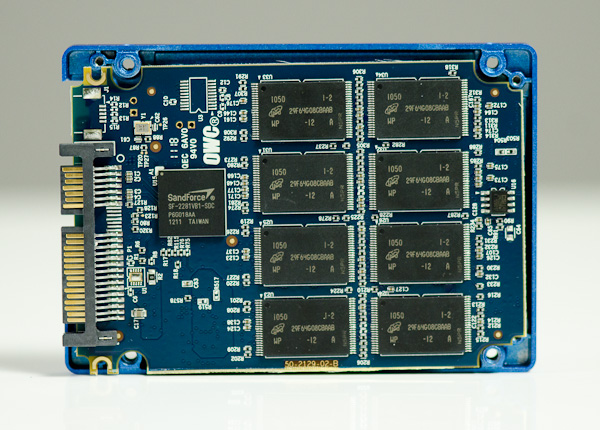


















90 Comments
View All Comments
DarkKnight_Y2K - Thursday, August 11, 2011 - link
"Bottom line, it seems like sandforce-driven ssds have the biggest number of issues, yet you still recommend them."Did you read the last sentence of Anand's review?
"The safest route without sacrificing significant performance continues to be Intel's SSD 510."
Socratic - Thursday, August 11, 2011 - link
Yeah I don't know what planet you have been living on, but in MULTIPLE articles Anand has basically ended with the phase, The only logical choice is Intel.How is that being a sandforce fanboy??
You need to keep YOUR bias in line and re-read the article and past articles!!
Anand Lal Shimpi - Thursday, August 11, 2011 - link
Given the continued issues with SF drives I'm quickly looking at other alternatives. Toshiba and Crucial have never been top end performers, which is why I've focused most of my recommendations on the Intel SSD 510. The biggest advantage SandForce continues to have is in better performance over the long run thanks to its live dedupe/compression. I've been working on a way to quantify that for a while unfortunately I don't have a good test I'm happy with...yet.Going forward I believe Samsung may be a bigger player. Take note of the recently announced PM830, expect full coverage of that drive upon its arrival.
http://www.anandtech.com/show/4606/samsung-announc...
Take care,
Anand
melgross - Thursday, August 11, 2011 - link
Well, dedup itself is subject to a lot of controversy. It isn't necessarally a good thing.Anand Lal Shimpi - Thursday, August 11, 2011 - link
I'd argue for most mainstream uses it's a very good thing for long term performance. If the SF-2281 had Intel's track record it'd be the best option in my mind.Take care,
Anand
name99 - Thursday, August 11, 2011 - link
Hi Anand,Rather than beating up on you for not stressing reliability more in the past, I'm going to ask, AGAIN, that you take power more seriously.
My experience has been
- replaced the hard drive in my 2nd gen MacBook Air with a RunCore IV. The thing would crash about once a week, as far as I could tell NOT from logic errors but because its power draw during a long train of writes spiked higher than the interface was specced for. If this coincided with a high power draw elsewhere in the system --- fan, CPU etc, game over
- an OCZ enyo USB3 drive which work just fine as a READ drive --- and is once again somewhat flaky if too many back-to-back writes occur
- a Kingston SSDNow V which I have as the boot/VM drive for my iMac running off USB. My original plan for this was to have it running off FW800 (which is in theory 7W of power), but I got the same thing as the two previous drives --- crashes with too many back to back writes. It's now running successfully because I stuck it in a Kingwin USB<->SATA bridge that is for 3.5" drives, and thus has a separate power supply and the ability to provide a lot of juice.
All this basically mirrors (along a different dimension) what you have said: these drives are ABSOLUTE CRAP for the naive consumer. You buy them, things seem great, and then randomly and with no obvious pattern to the naive user, your system hangs.
You seem to be trying really hard to have the manufacturers get their act together; my point is to remind you that an IMPORTANT part of getting their act together is that these things are ALWAYS within spec with respect to power. Right now, we seem to have a lot (at least three different brands, in three different market segments) of drives that are simply not within spec --- they can run on the power that the system is specced to deliver for most command sequences, but there are always those few command sequences that over-draw power. Heck, at the very least, it is the responsibly of the drive to recognize this
situation and throttle themselves, just like any modern x86 CPU.
Coup27 - Thursday, August 11, 2011 - link
+1.I have been feeling similar sentiments lately as well.
I have posted in the forums on what happened to the 470 review but no official comment from anybody. Considering all of the reliability issues flying about, you woud think that if the 470 was a reliable as word suggests, it would have had a featured review.
Some guy actually bought an Agility 3 based off the AT review and forum list of recommended drives and neither mentioned the BSOD. When he got it the BSOD, he went into the forums and kicked off. Rightly so.
Unfortunately issues drag on for sometimes months before AT even update their article to make people aware that the product they might be buying could be seriously flawed.
No other website offers the depth of detail which AT does and for that the editors are applauded, but unfortunately the playing field does not seem level.
Lord 666 - Thursday, August 11, 2011 - link
Before this article, previous reviews of Vertex problems did not address the issues. This hits it head on.jo-82 - Thursday, August 11, 2011 - link
The Kingston HyperX cleary stands out with a consistent high performance. Why no words on that? Clearly the drive to buy. And Kingston has imho a much higher reputation on circuitry reliance and better QA in general then the rest of the pack, except Intel.Roland00Address - Thursday, August 11, 2011 - link
And I ain't sure you can apply the logic of Kingston being rocking when Kingston purposefully makes their SSD line confusing using similar names with completely different controllersKingston E series, Intel X25-E controller
Kingston M series, Intel X25-M G2 controller
SSDNow V 100, JMicron JMF618 controller
SSDNow V+, Samsung S3C29RBB01 controller
SSDNow V+ 100, Toshiba T6UG1XBG controller
SSDNow V+ 180, Toshiba T6UG1XBG controller
SSDNow V Series, Toshiba TC58NCF602GAT controller, which is based off the stuttering JMicron JMF602
30GB SSDNow V Series Boot Drive, Toshiba T6UG1XBG controller
I may be forgetting to list a couple models, but as I pointed above, Kingston has used 2 different controllers from Intel, 1 from Samsung, and 2 different from Toshiba (and all these controllers have similar names), not counting their most recent drive that is a Sandforce controller.